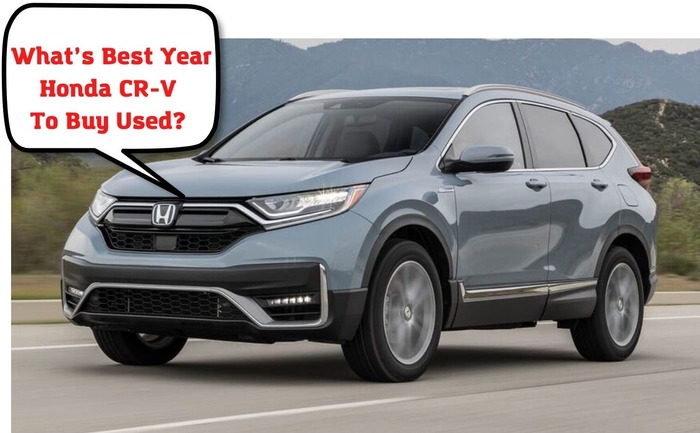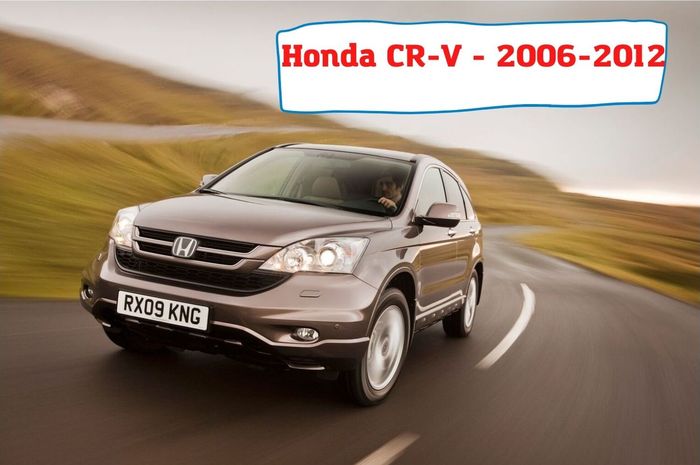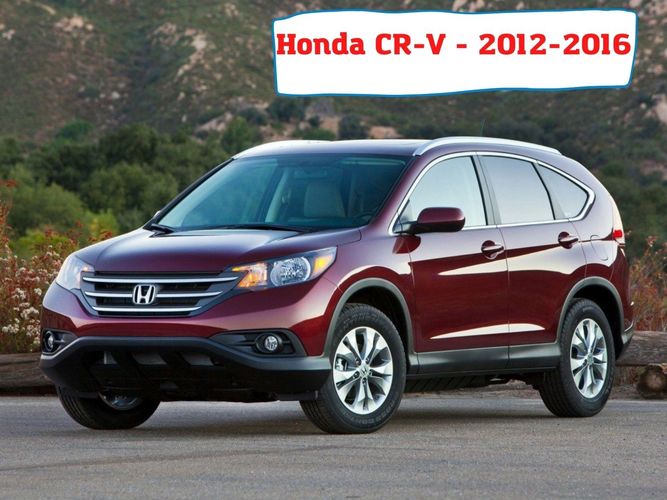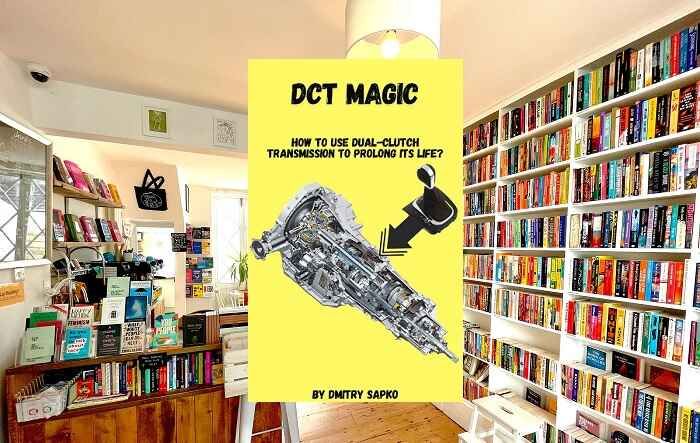
The Honda CR-V is one of the most popular SUVs on the market. This is a family car that is made to last. At least, this is what Honda Company says about the vehicle. Today, we decided to look at the generations and modifications of the Japanese SUV on the American market and to answer one popular question: which CR-V model is the best to buy used. We won’t take into account the current generation which is apparently much worse in terms of reliability than the previous ones.
In our today’s article, we’ll discuss a bunch of questions:
- which year of Honda CR-V is the best to buy;
- which engines you should look at when buying a CR-V;
- what kinds of transmissions were installed;
- what major problems should you expect;
- what is the optimal mileage of a used Honda CR-V.
Let’s dive in!
Years of Honda CR-V – which generation is better?
Basically, you’ll have a choice of three generations when looking for a used Honda CR-V on the market. The first one is the 2006-2012 generation with a facelift in 2010. Then there is the 2012-2016 generation with a slight facelift in 2015. In 2017, Honda offered a new generation which you shouldn’t buy used because it will cost you too much for a used car. If you are ready to pay that much, then you should visit the Honda dealership near you and get a new car. But it sounds much easier than one can actually do it.
The 2006-2012 generation

This generation of Honda CR-V is legendary. People loved it for its revolutionary design and very good engines. The car was reliable and had only minor problems. But we can’t recommend you to buy this car used because now it’s too old, and most Hondas of this age will have huge mileage.
This generation of the Honda CR-V obviously had a lot of advantages. And if you own one of them for 10 years or more, you will probably keep driving it without much trouble. But if you buy one now, you will probably have a lot of problems with this car. If you still want to risk, choose the 2010-2012 model after restyling with lower mileage.
The 2012-2016 generation

After a very successful 2006 generation of the CR-V, Honda tried hard and made a lot of important changes to produce the fourth generation of the legendary SUV. It was first introduced in 2012 and buyers were ready to invest in the new model thanks to the great reputation of the CR-V. The fourth generation was quite successful in the US and all over the world. It changed the style of Honda cars, showed that the classic elements of the design can be applied together with the cutting-edge decisions and still look wonderful.
In 2015, the manufacturer presented a facelift version of the CR-V with slightly changed trims and a couple of changes in technical equipment. And the facelifted version kept on fighting for the market for 2 years. After that, the less successful fifth generation arrived with the higher price and a little less reliable transmission.
What to choose among the used Honda CR-V generations?
Our answer is 2015-2016 years! These years of Honda CR-V now seem to be the best in terms of technologies, design, and equipment. You can still opt for the 2012-2015 version because it’s basically identical to the fresher facelift version. But we can name a couple of important points to choose the 2015 model:
- it’s fresher, so the chances are you will find a better car with lower mileage and in better condition;
- the design is updated and refreshed, so the car looks more modern than the 2012 version which in turn is quite old-fashioned now;
- the equipment is still quite good and reliable, great engines are used together with Honda’s best transmissions;
- the interior looks better, you will find a lot of important options to use when driving.
Also, Honda company worked hard with ride comfort and changed a lot in this sphere when producing a facelift model. So you may expect to get a higher comfort and a better ride quality. Also, if you compare the 2012 car with the 2016 car, the latter will be a much better choice because it will be younger, more beautiful, more comfortable. And one possible drawback is that it will cost much more.
What about prices for the used Honda CR-V?
The cheapest option you could actually consider buying is the 2010 Honda CR-V. This is a car of the 3rd generation after the facelift. This vehicle isn’t modern anymore, but it’s still reliable if bought with low mileage. The optimal price for such a car is around $9,000. But many sellers will ask even more than that.
Though, this option seems to be outdated and too risky to buy because the car is quite old. So many buyers will want to go for the more expensive 4th generation that started in 2012. And you could buy one starting with $11,000, but those options will have huge mileage over 200 000 miles or damage history. The decent models will cost somewhere near $14,000.
The best option, in our opinion, is the 2015-2016 Honda CR-V that starts approximately at $15,000 with some problems like big mileage, insurance loss, damage history, or minor damages. The decent cars will start at $20,000. After paying this money, you will be the owner of one of the best generations of Honda CR-V. Maybe, the only disadvantage of this vehicle is the CVT transmission. In the older models (2012-2014) the CR-V was offered with the conventional automatic transmission, but after 2015 they changed it for a CVT. Though, the transmissions last long and don’t cause many problems. But still, buying a car with over 200 000 miles behind is quite a bad idea.
What equipment should I choose for the 2015-2016 Honda CR-V?
Well, you don’t have much choice in terms of the engine – it’s the only option of a 2.4-liter 4-cylinder unit showing 185 hp of power and 181 lb-ft of torque. It offers an average of 28 mpg of gas mileage which isn’t bad at all considering you get a mid-size SUV.
The only transmission option for this generation is the CVT. Many experienced drivers will say it’s bad and not reliable at all, but we see cars that have over 300 000 miles behind and they still have the original CVTs. So, it’s better than many other options.
In terms of trims, you will have a choice of EX, EX-L, LX, and also Touring. Of course, the Touring option is much better than others. But when it comes to buying a used car, you rarely have the choice of trims. The main idea is to buy a good car with no previous accidents and with low mileage.
Honda produced CR-V SUVs both with an AWD system and without it. Of course, the AWD models are more popular, but actually, it’s not the car to go off-roading, so the front-wheel-drive option will still be good.
Main problems of the 2015-2016 Honda CR-V
- Vibration when idling. Honda wanted to make the new CR-V more economical than the competitors of the SUV. So the company redesigned the ECU system and made the computer lower the idle RPM when the car is at traffic lights. This led to a vibration that occurred in many cars and could only be solved by reprogramming the ECU at the dealerships.
- Starter failure. A lot of owners complained that they had to invest in the new starters once the warranty was over. This is way too early for a Honda car, so we can say this is a drawback of the model.
- Engine stalling when in reverse. Sometimes the CVT surprised the Honda owners with the bad operation. When you put your car in reverse, it may stall. This is also the issue with the ECU or probably the start of transmission problems.
- Brake problems. Sometimes drivers wrote in their reviews that the brakes in these cars felt spongy and changed their resistance over time. This leads to dangerous situations on the road when the driver doesn’t know how the brakes will react.
Used or new? Hard question to answer
When you start investigating the market, you will see that the decent Honda CR-V with low mileage and great equipment will cost you around $22,000 for a 2015 model. And it can be even more sometimes. The question is whether it’s worth buying the 7-year-old car for this money. If you have an option to add a couple of thousand, or you may use the loan in your bank, it’s better to opt for a new CR-V that starts with an MSRP of less than $28,000.
Yes, it will have a 1.5-liter turbocharged engine, a CVT, and probably worse equipment than the used model, but this is a new car that comes with a warranty and will last longer than a used one.
Here are the pros of buying a new Honda CR-V:
- you get a vehicle with 3 years or 36 000 miles of manufacturer warranty;
- you are quite sure that the car has no history, no damages, no repairs;
- the vehicle is new, no one has ever been seated in that seat before;
- you are sure that the car wasn’t poorly maintained before;
- you get the freshest design of the CR-V which is quite good;
- you get all the fresh options and equipment in your car’s interior.
Well, yes, the engine is much worse, but the design, the fact that the car is new, and also the trims are much better. By the way, the new CR-V will deliver 30 mpg on average and 34 mpg of gas mileage on the highway.
Conclusion – what year of Honda CR-V should you buy?
After considering all the facts about the CR-V generations, trims, years, and problems, we came to the conclusion that the best model year of the Honda CR-V is 2015 or 2016 if you want to buy a used car and save some money. But if you are OK with loans or if your budget is around $30,000, you should opt for a new car.
Honda CR-V is a great mid-size SUV that is going to deliver you much comfort, a lot of driving freedom, and also ultimate safety. This is a good choice for all types of drivers and all kinds of buyers.
About the authors
The CarAraC research team is composed of seasoned auto mechanics and automotive industry professionals, including individuals with advanced degrees and certifications in their field. Our team members boast prestigious credentials, reflecting their extensive knowledge and skills. These qualifications include: IMI: Institute of the Motor Industry, ASE-Certified Master Automobile Technicians; Coventry University, Graduate of MA in Automotive Journalism; Politecnico di Torino, Italy, MS Automotive Engineering; Ss. Cyril and Methodius University in Skopje, Mechanical University in Skopje; TOC Automotive College; DHA Suffa University, Department of Mechanical Engineering






Add comment